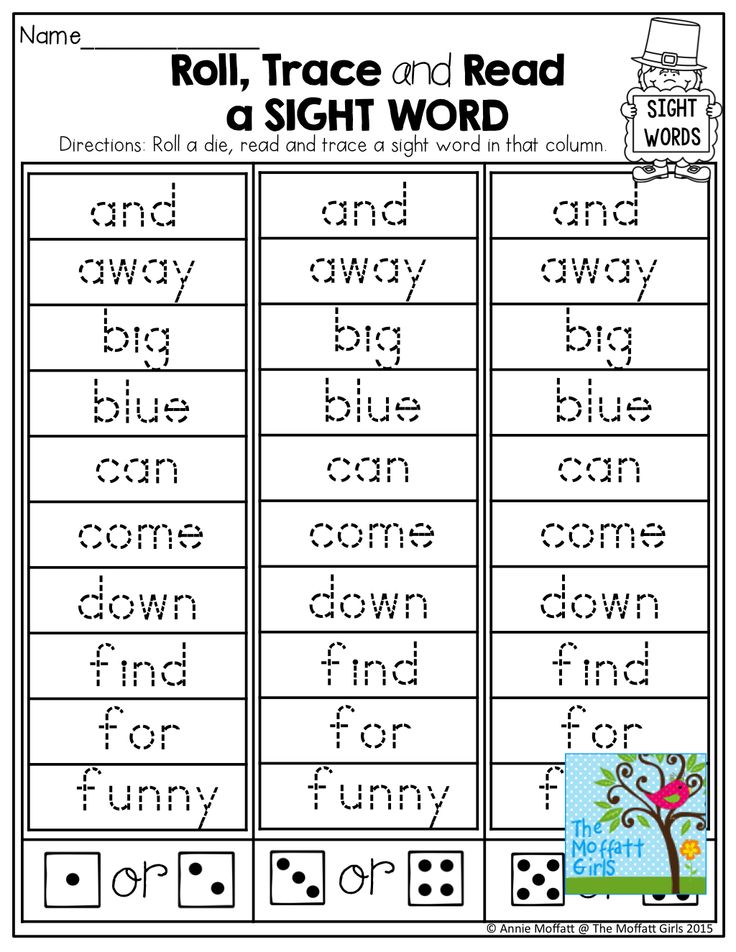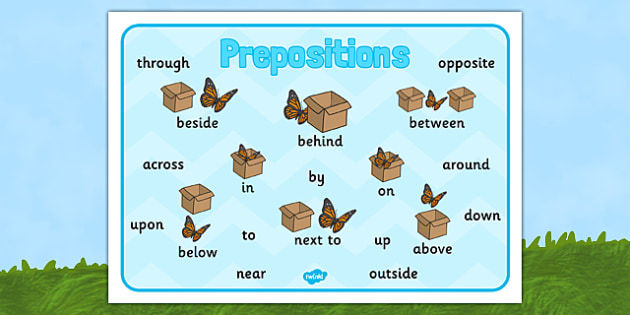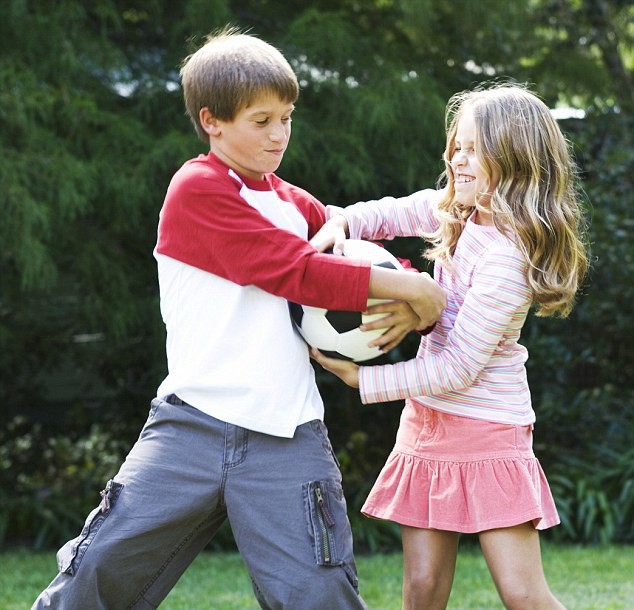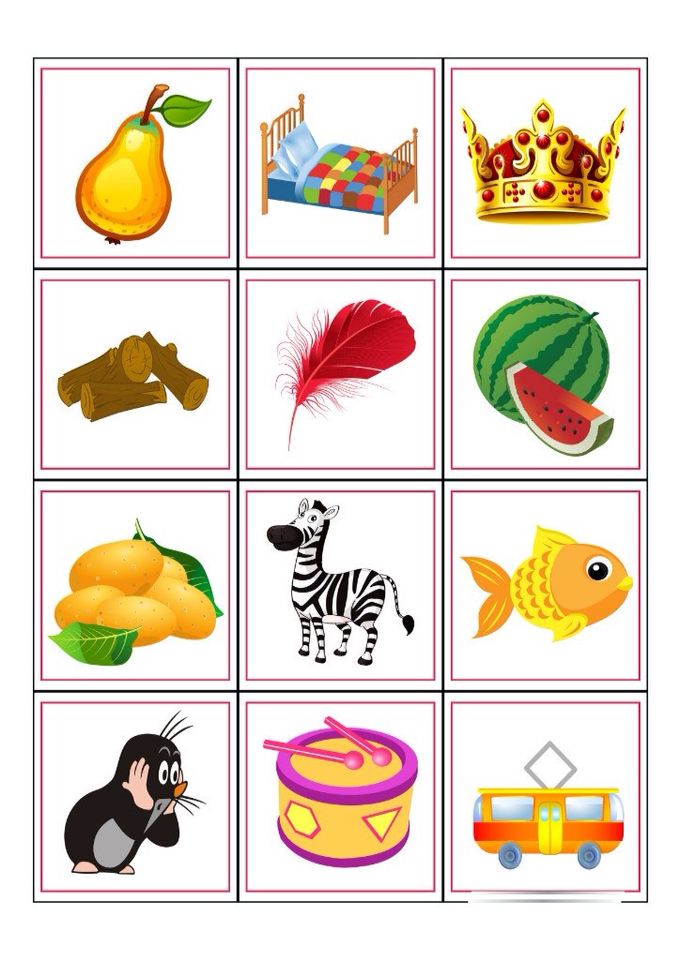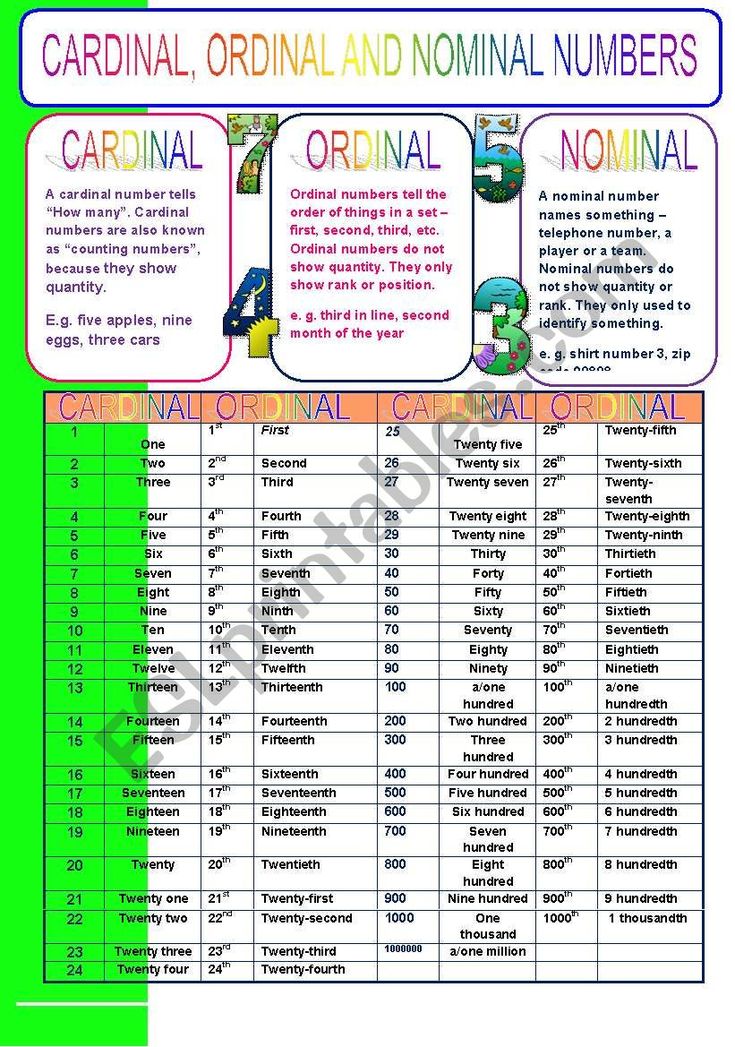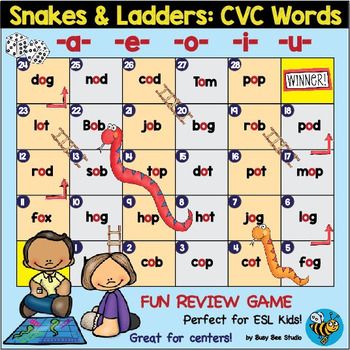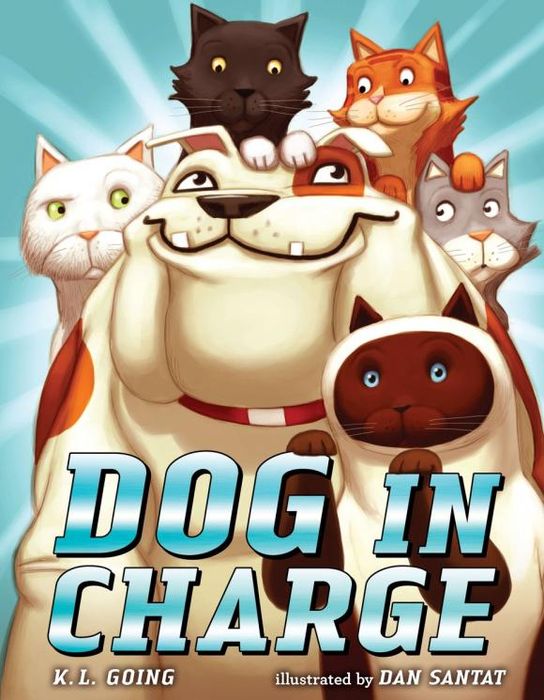Learn rhyming words
All About Rhyming Words For Kids, Plus Tips For Rhyming Practice
If you’re interested in some quick and fun ways to teach rhyming words for kids, you’re in the right place. And if you’re not sure how powerful rhyming can be, just think about the impact of Dr. Seuss’s books.
Why does Dr. Seuss continue to dominate children’s literature almost 30 years after his death? There are many reasons why Dr. Seuss’s books stand out from his peers’.
Besides the fact that they are incredibly fun to read, have great rhythm, and teach us all a thing or two about some of life’s lessons, his books are also easy to remember thanks to his use of rhyming.
Although rhymes seem like fun and games, they actually play an important role in language development.
In this article, we’ll explore everything you need to know about how to help your child develop this essential language skill.
Let’s start by defining what rhyming words are.
What Are Rhyming Words?
Rhyming words are words with the same ending sound. For example, “at” and “bat” are rhyming words. But so are “through” and “blue,” even though they end with different spelling patterns.
When working with rhyming words, it’s the sounds that count, not the letters. Take “approve” and “above,” for example. Both end in the letters /o/, /v/, and /e/. However, those three letters aren’t pronounced the same way in both words, so the words don’t rhyme.
Why Does Your Child Need To Learn How To Rhyme?
Before we explore the different ways to teach rhyming words for kids, it’s important to know why you may want to put in all this effort. Why should your child bother learning this skill?
Rhyming benefits children in plenty of ways. Let’s take a look at some right now.
1) Better Information Retention
One of the benefits of rhymes is that they help children (and adults) retain information more quickly and easily.
Children enjoy the feeling of reading deeply familiar stories, and doing so can even allow young readers to memorize parts of a book (or a whole book!).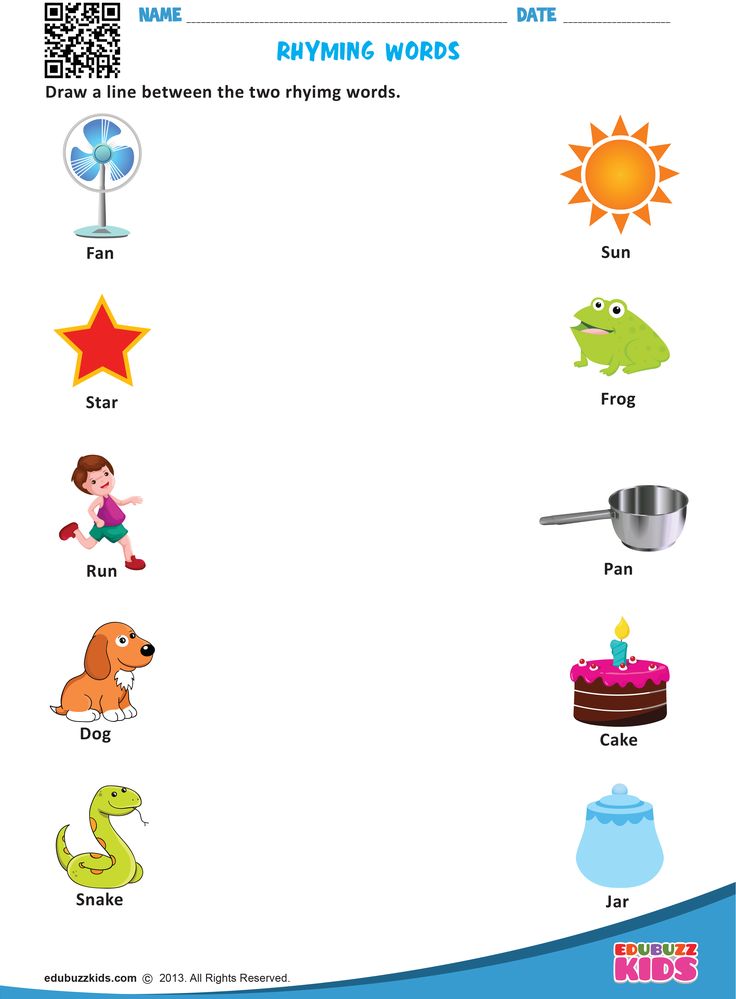
Since these books are full of rhyming words, they’re easier to remember. That’s because rhymes stick in your child’s brain more quickly than other types of spoken language.
As your child hears the words, their mind breaks them down into sounds and makes connections between them. This connection between the words makes them easier to recall in the future.
Because of the impact of rhyme, many adults can still recite poems or songs they learned way back in elementary school.
2) Reading And Writing Benefits
If your child learns how to spell the word “fun,” it’s much easier for them to spell “run” correctly. Rhyming helps them pick up on patterns and word families, which can benefit them as they learn to read and write.
Finding patterns in words can unlock the world of reading for your child. They’ll discover success reading children’s books written in rhyme, which can be a huge confidence booster!
And, as they continue reading, they’ll be able to take what they’ve learned and apply it to non-rhyming words.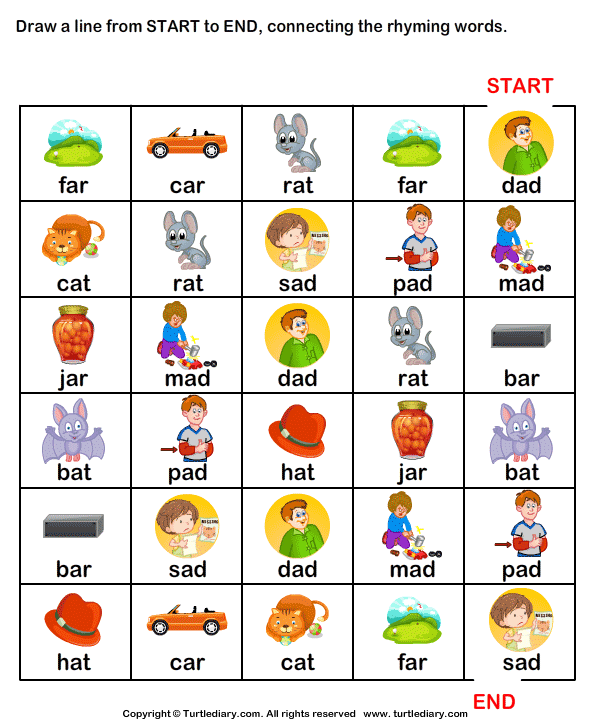
3) Phonological Awareness Development
Phonological awareness helps children identify and isolate sounds in words.
For instance, a child with phonological awareness will understand that the “all” sound in “ball” is the same “all” sound in mall, tall, hall, wall, etc.
Rhyming is one of the activities that can help develop this skill.
4) Listening Skills
Kids hear rhymes before they can read them. So, when you play with rhymes together, you help your child learn to listen to the different sounds in a word.
Listening is an essential skill that kids need to practice. As you work with your child on rhyming, they’ll be learning to use their ears to collect all of the information they need.
5) A Fun Way To Play With Language
Learning shouldn’t be boring, especially if you want to capture and hold your child’s attention. So, how do you bring some fun into it?
Rhyming words for kids can be an exciting way to do just that! When rhyming, your child is likely to engage more and, in the process, continue wanting to learn about language.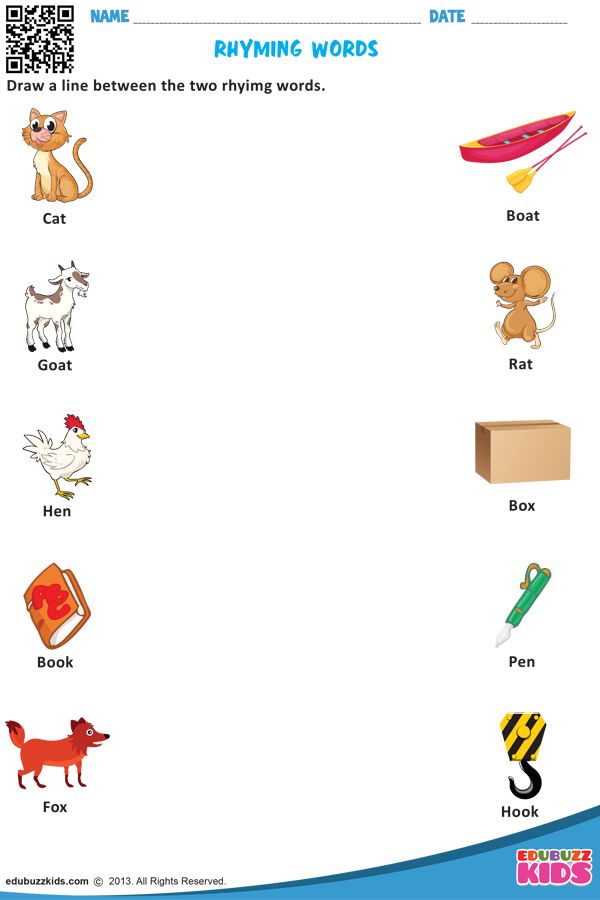
6) Cultural Literacy
Classic nursery rhymes and classic rhyming songs are a part of our culture.
The more your child is exposed to them, the more comfortable they’ll be when they come across other literature in the future with references to familiar rhymes like “Hickory Dickory Dock” or “The Itsy Bitsy Spider.”
The Three Stages Of Rhyming
Like most language development skills, rhyming takes time to develop. While you’re on this journey, your child will go through the following stages.
1) Hearing Rhymes
Naturally, the first stage of rhyming is repeatedly hearing rhymes. Your child can’t learn this skill if they aren’t exposed to rhymes.
This exposure can be through songs, nursery rhymes, and children’s books. It’s important to point out any rhyming words to your child as you come across them at this stage.
For very young children, chanting rhyming words while clapping or swinging their arms or bouncing rhythmically (blue/shoe…blue/shoe…blue/shoe) can activate rhyming and be fun to do.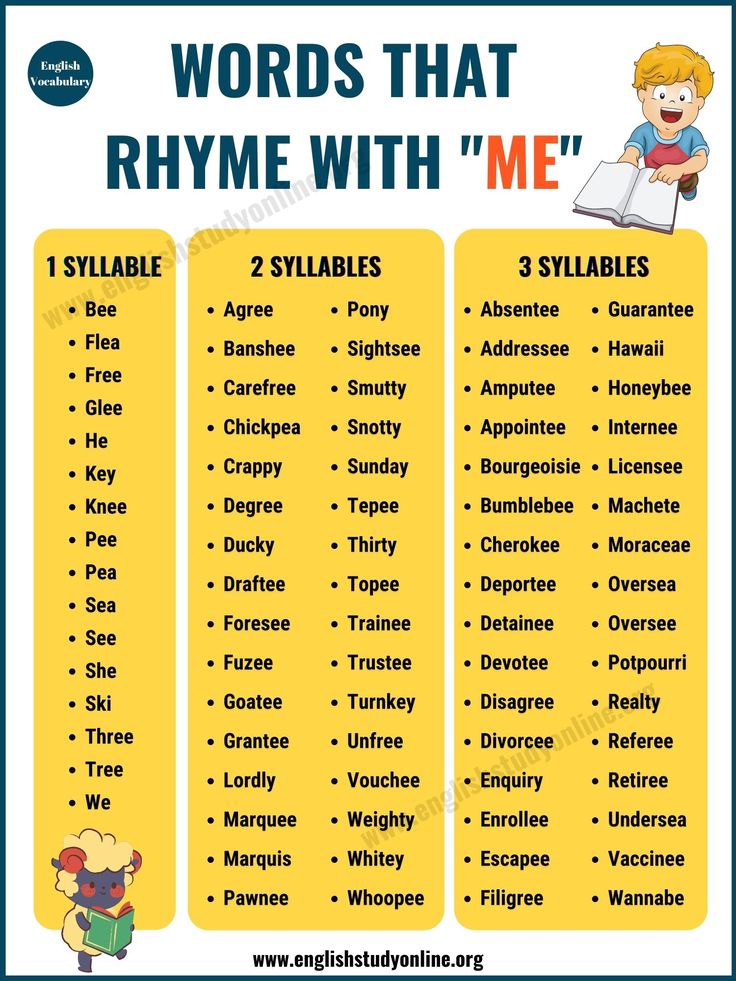
2) Recognizing Rhymes
The more your child is exposed to rhyming words for kids through the songs or the books you read to them, the easier it will be for them to begin recognizing rhymes.
When your child starts pointing out which words rhyme in a song or book, they have reached the stage of rhyme recognition. During this phase, continue singing songs, sharing nursery rhymes, and reading rhyming books.
Once your child indicates that they’ve found a rhyming word, stop reading and let them show you. If they’re right, encourage them by saying, “Yes, those words end in the same sound; they rhyme.” Praise them for listening carefully and finding words that end in the same sound.
If your child makes a mistake, that’s OK! Gently correct them by saying, “I’ll repeat those two words. Listen carefully.” Then, say the two words aloud clearly. Finally, explain why the words don’t rhyme.
3) Creating Rhymes
So, you’ve been singing and reading to your child.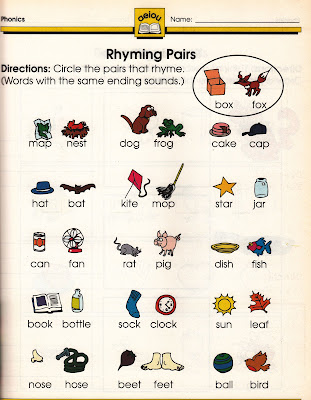 You’ve helped expose them to different rhymes, and they have also started to recognize them.
You’ve helped expose them to different rhymes, and they have also started to recognize them.
The next stage is your child creating their own rhymes!
Children love making up nonsense rhyming words (like pickle/smickle), and you might get to see your child’s creativity as they try to use their knowledge and understanding of rhymes to produce their own.
Don’t be surprised if they ask you questions like, “Do you know what rhymes with talk? Walk!” During this phase, your child might also show interest in writing their own books with rhyming words on the pages. Encourage them to let the creative juices flow!
The more your child practices, the better they’ll become at making their own rhymes using rhyming words.
Why Might A Child Have Trouble With Rhyming?
Some kids pick up rhyming quickly and easily. Others require a lot more repetition before they can recognize or create rhymes.
If your child is having some trouble, here are four common culprits.
1) They Haven’t Yet Developed Phonological Awareness
Phonological awareness is an umbrella term that includes the development of segmentation, rhyming, and blending syllables.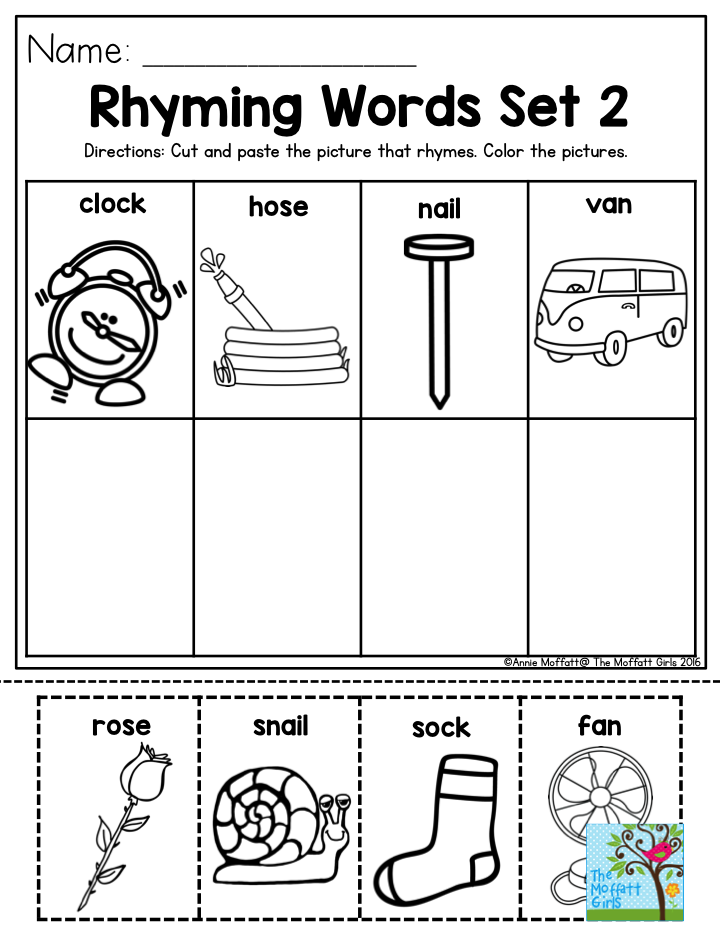
As we mentioned, some kids pick this important skill up easily, while others may need a little more practice to get the hang of it.
If you suspect that your child isn’t ready to rhyme, that’s OK! Slow down a bit, and read plenty of rhyming books together. Talk about the words and point out the sounds the letters make in them.
Using the HOMER Explore Letters Kit is another great way to practice. Build a word with the magnetic letters. Then, create another word that rhymes by swapping out the first letter. Encourage your child to make another word that rhymes with the first two.
As you help them gain confidence with the alphabet and the sounds letters make, you’ll equip your child with the skills they need to rhyme.
2) They Might Be Confused About Which Words Need To Rhyme
In some books, the words that rhyme are at the end of consecutive lines. But sometimes, alternating lines rhyme. And other times, the rhymes are at the beginning of a sentence, not the end.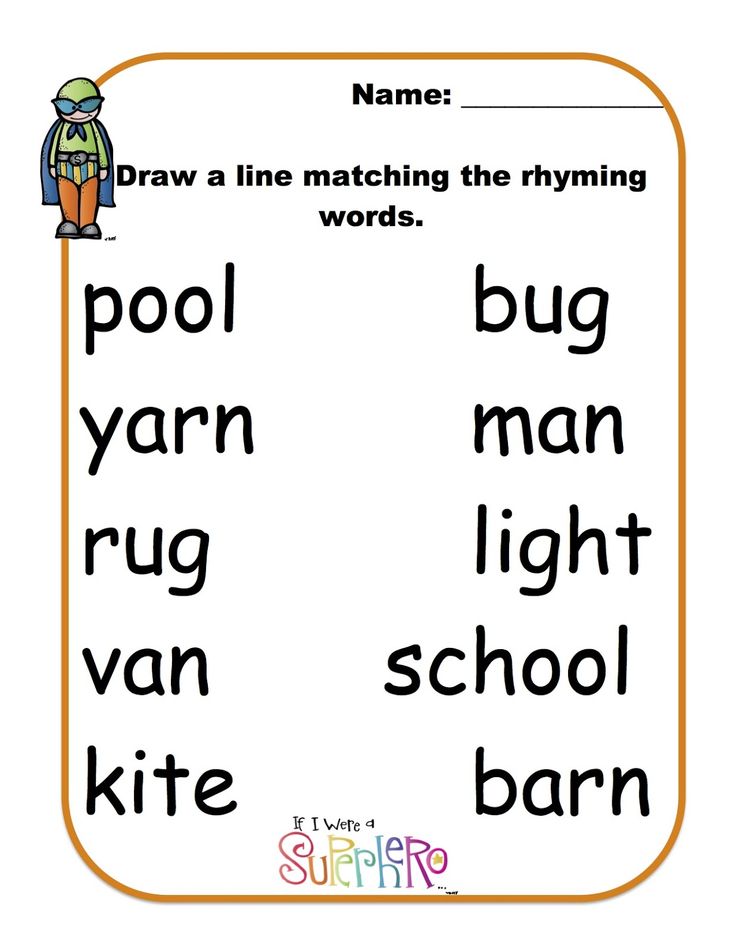
All of this inconsistency in rhyming patterns can be confusing to a child who is trying to learn this skill.
To practice, work together to find rhyming words and see where they are. This can teach your child to look for patterns in words, which can help them become a better reader.
3) They Might Have Trouble Focusing
For any child to learn rhyming words, they need to be able to focus on the activity so they can pick up on the different sounds and rhythmic patterns.
If your child quickly loses interest in the activity you’re doing together, they might not hear you when you highlight that “look” rhymes with “book.”
To help, make sure you’re working on age-appropriate skills. If your child is a young toddler, they might not be developmentally ready for rhyming. Wait a little longer, and then try again.
If your child is ready to rhyme and just loses focus, try a different type of activity. For example, play a rhyming game or read a book they enjoy.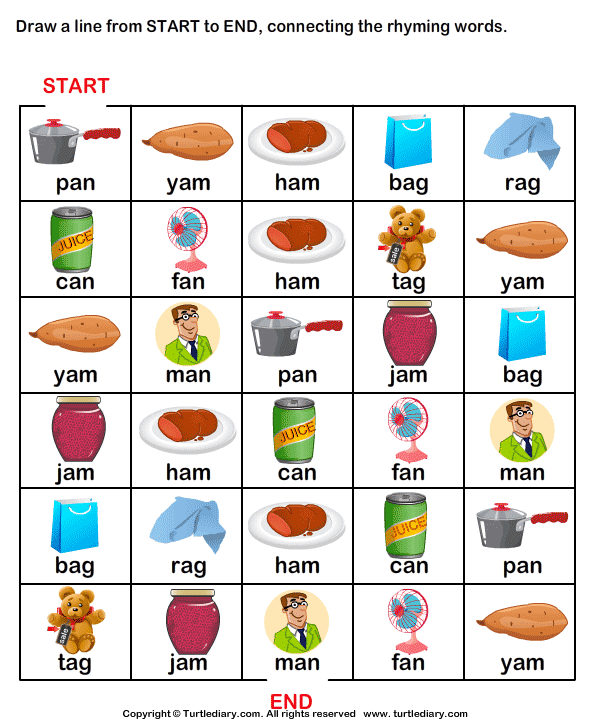 Again, doing something that interests them can help hold their attention.
Again, doing something that interests them can help hold their attention.
4) They Confuse Which Part Of The Words Are Supposed To Rhyme
Some kids may get mixed up because they think words that start with the same letter rhyme.
If your child says that moon and milk rhyme, they’re on the right path. They understand that part of the two words needs to match; they’re just confused about which part.
To help your child overcome this, start emphasizing the ends of the words when you point out rhyming words for kids. Instead of saying, “Pig and wig rhyme,” say, “p/IG and w/IG rhyme.”
This pulls the focus to the end of the word. It may take time, but keep practicing, and you’ll help your child master this skill!
Helping Your Child Develop Their Rhyming Skills
The above are some of the common reasons why your child may not have mastered rhyming just yet. But now that you understand the importance of rhyming, how can you help them acquire this skill?
These eight fun rhyming activities can help reinforce the concept for your child.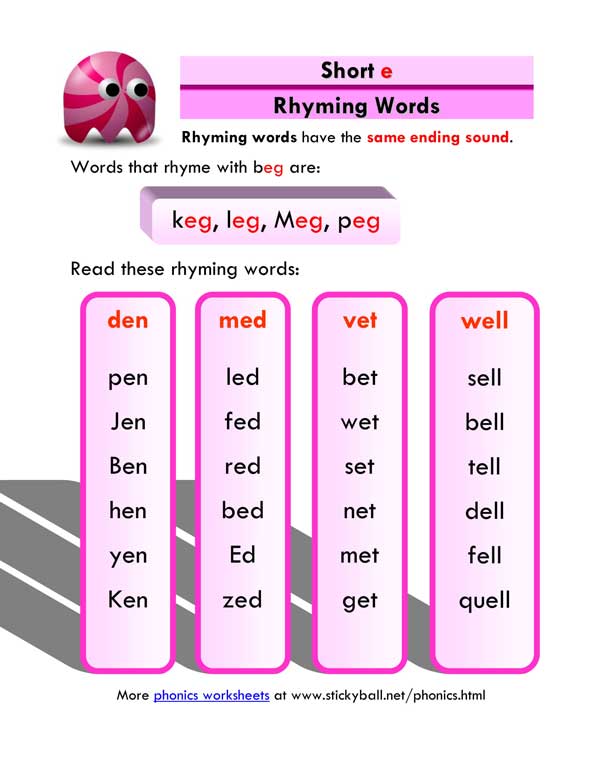
1) Recite Nursery Rhymes
Nursery rhymes are not just for babies! They can actually play an essential role in young children’s language development. That’s because they help kids hear the different syllables and sounds in language.
A fun activity to enhance learning during nursery rhymes is to play fill in the blank. Simply recite a nursery rhyme out loud and leave your child to fill in the last word.
For example, “Humpty Dumpty sat on a wall. Humpty Dumpty had a great…”
The proper ending is the word “fall.” If your child doesn’t get it at first, that’s OK. Repeat the sentence, adding the word they suggested to the end. Then, ask your child, “Does that sound right?”
If not, say it the correct way and point out that “wall” and “fall” rhyme.
It can also be fun for the adult to say what comes next and supply a completely wrong word. Your child will get a kick out of the silly answers you come up with!
2) Sing Songs That Rhyme
Many popular and age-appropriate songs also rhyme.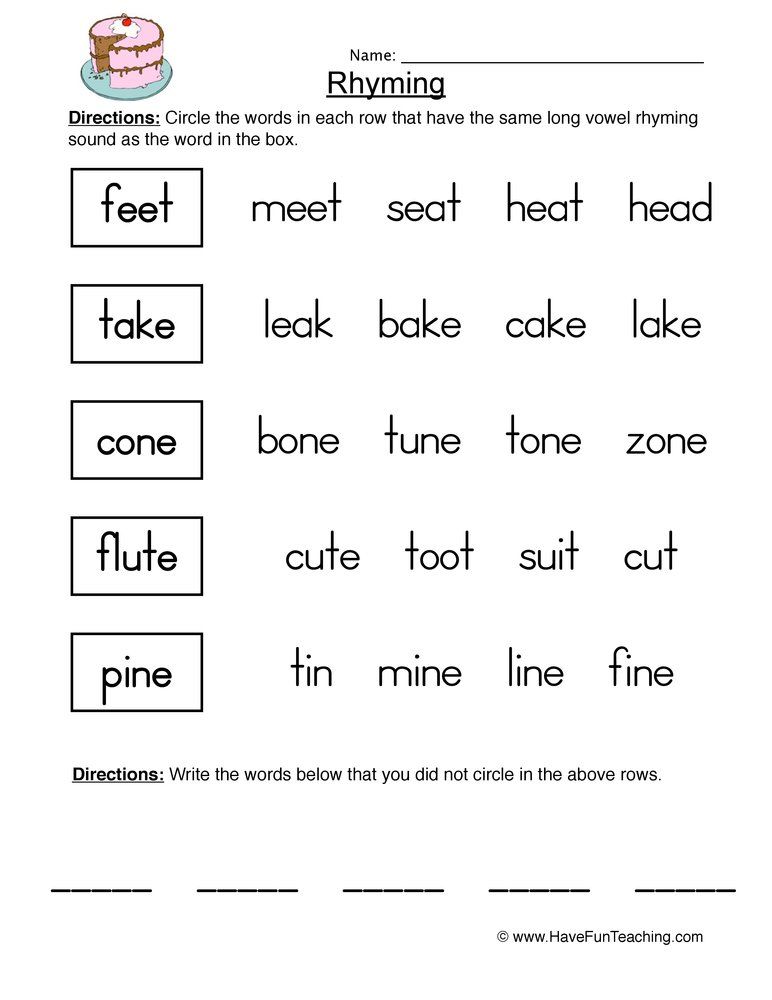 So, why not point out the rhymes when watching TV or listening to music?
So, why not point out the rhymes when watching TV or listening to music?
As we’ve mentioned, the more children are exposed to rhymes in different forms, the easier it will be for them to fully grasp the concept of rhyming. Noticing rhymes in your day-to-day activities is a great way to accomplish that!
There are so many fun, silly songs that rhyme. Here are a few of our favorites:
- Down By the Bay
- I Had a Little Turtle
- 5 Little Monkeys Swinging in a Tree
- On Top of Spaghetti
- If All of the Raindrops
- Do Your Ears Hang Low?
Pick one song at a time to work on, and sing it often — during car rides, while setting the table, or in the bath. This way, your child becomes familiar with the words and the tune.
Once they know the lyrics, pause where a rhyming word goes and ask them to say what comes next. Let them say it, and then keep singing.
When you have one song down, pick another to learn. Each time you sing a rhyming song, you’re helping your child master the skill of rhyming.
3) Read Poetry
Poems are a wonderful way to engage in rhyming words for kids. This is also an opportunity to expose your child to different and diverse literature.
For instance, Lucille Clifton, Nikki Grimes, and Nikki Giovanni are some poets who’ve written incredible poetry for kids.
There are also many children’s books written partially or totally in rhyme, such as the “Llama Llama” books. The idea here is to continue exposing your child to different forms of rhymes.
For a bit of fun, consider hosting a family poetry night. Let everyone pick a favorite poem to share. Then, spend a few weeks memorizing the words. On poetry night, take turns reciting your poems and listening to each other.
Alternatively, you can use this night to read several poems from different poets. That way, your child can hear a variety of poems and listen to the different ways each poet uses the English language.
You may even want to incorporate poetry into your bedtime reading routine, too!
4) Play Rhyming Word Games
There are plenty of ways to help your child learn to rhyme while still having fun!
For instance, you can use the letters in the HOMER Explore Letters Kit to spell out a word ending in -at.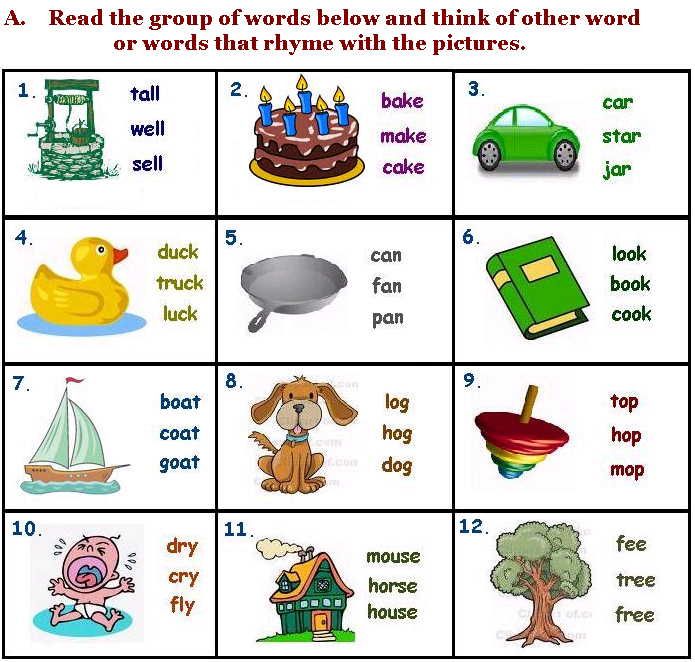 Put the letters “at” on the board.
Put the letters “at” on the board.
Your child now needs to place letters at the beginning to create words that rhyme (cat, hat, bat, mat, etc.). See how many they can come up with for a prize!
You can also play rhyming games when you’re out and about. Pick a word and say it aloud. Ask your child if they can think of a word that rhymes with it. Then, add your own word that rhymes.
Continue playing, alternating who speaks, until no one can think of another rhyming word. Have your child pick a new word and begin again!
5) Rhyme With Pictures
Images can help summarize chunks of information into smaller and easier to process content. You can take advantage of this by using picture books.
Pictures of a hat, cat, or mat may not expose learners to how these words are written, but it allows them to start learning the basic concept that rhyming words sound similar.
You can also create custom picture cards with a pack of index cards. Draw a simple, easily recognizable object on each card.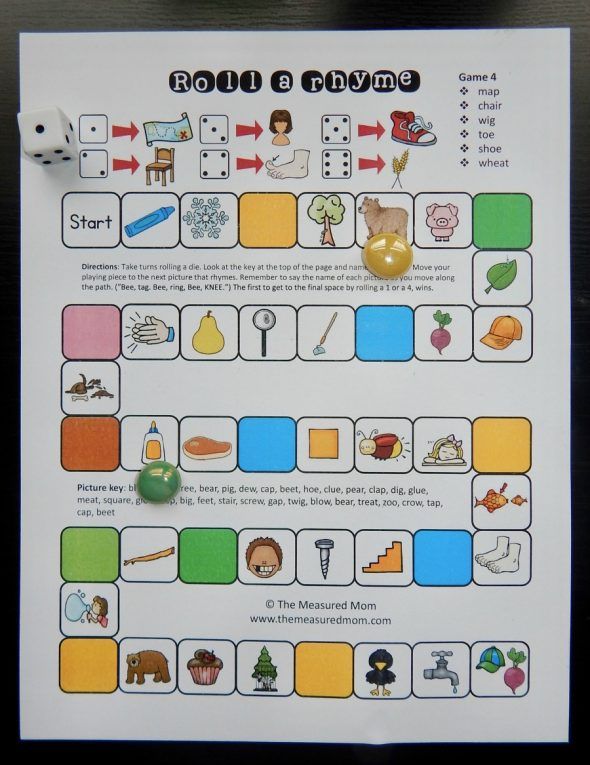 Here are some words to use for your pictures:
Here are some words to use for your pictures:
- Moon
- Spoon
- Bear
- Chair
- Cat
- Hat
- Ring
- Swing
- Dog
- Log
Once you have your cards made, you can use them in various ways. For example, you might spread them out upside down and play Memory with your child. Take turns flipping two cards at a time. Say the two words aloud. If they rhyme, keep them. If not, flip them back over.
You can also hide one word from each matching pair around the room. Hand your child one of the other ones and say, “Can you find a card with a picture of something that rhymes with ‘ring?’” Then let them search around the room to find the right card.
6) Act It Out
Instead of just reading or singing a rhyme, acting it out can help a child not only remember the rhymes but also have fun in the process!
Whether you’re acting it out, singing, reading, or using picture books, the more you expose your child to rhymes, the quicker they’ll grasp the concept.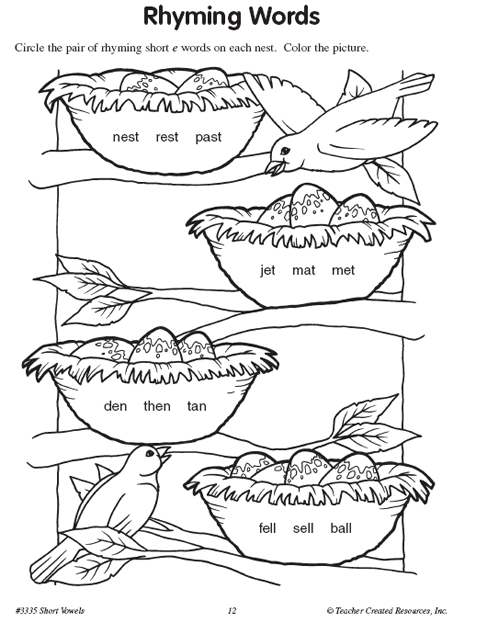
7) Rhyme Nonsense Words
Nonsense words are words that aren’t actual words. For example, the word “thirp” is a nonsense word.
Teachers often use nonsense words to help students learn specific skills, including the developing the power of the hour: rhyming.
Say a nonsense word and ask your child to think of a real word that rhymes. Here are a few words you can try:
- Vlat
- Trun
- Splew
- Ploon
To make it even more fun, pretend to be a robot or an alien. Then, ask your child to help you translate your language into English by coming up with a rhyming word.
8) Make A Rhyming Basket
Look around your house for items that rhyme, and put them in a large basket or box for your child to use. They can sort objects, create a story with the rhyming words, draw them, or use their imagination to interact with the rhyming words in a new way.
Here are a few ideas of common objects that rhyme:
- Sock, block
- Pan, can
- Jar, car (a toy one, of course!)
Have your child brainstorm more items that rhyme to put in the basket.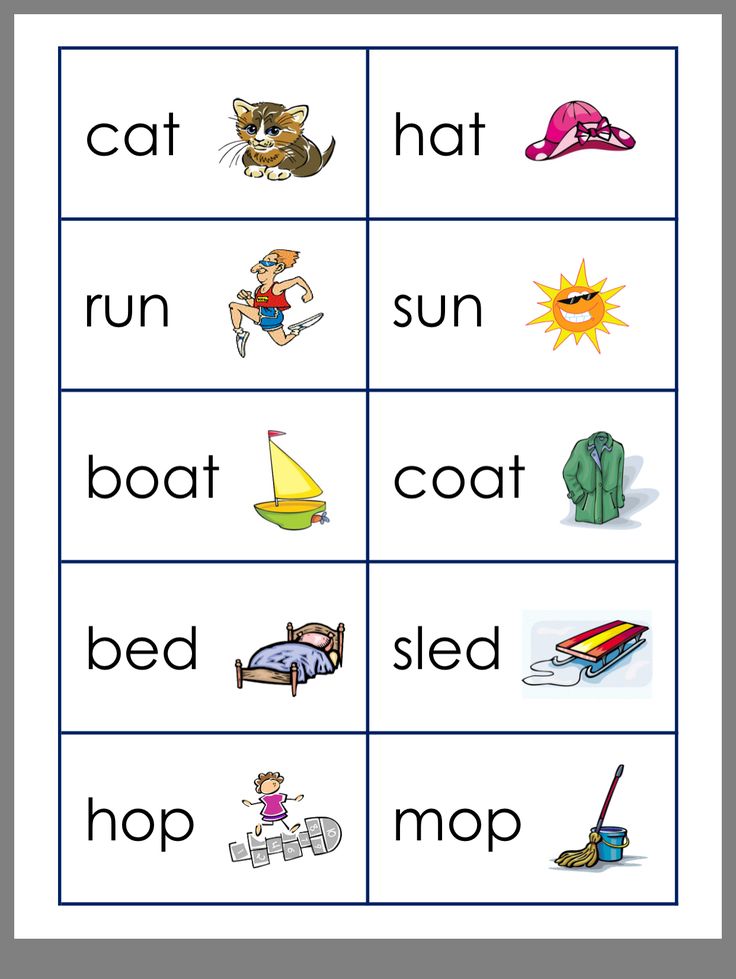 Since these things will get played with, make sure the items are kid-friendly and safe.
Since these things will get played with, make sure the items are kid-friendly and safe.
Books With Rhyming Words For Kids
We’ve already mentioned a few authors who have created some incredible children’s books that rhyme. Here are a few other popular options that your little one can also enjoy:
- There’s A Wocket In My Pocket!
- Here’s A Little Poem
- Llama Llama Red Pajama
- Madeline
- Rhyme Crime
- Baby Boo, I Love You
- I See The Moon: Rhymes For Bedtime
- Giggly Wiggly: Playtime Rhymes
It’s Time To Rhyme With Rhyming Words For Kids!
Rhyming words for kids are a fun and creative way to lay a solid foundation for literacy.
So, remember to continue reading children’s literature and singing all the fun nursery rhymes you can think of. As your child gets more comfortable with the rules, don’t be surprised when they start creating their own unique rhymes!
To help your young learner develop other important skills, you can also check out Homer’s Learn & Grow App, which helps kids develop their reading, creativity, thinking skills, and so much more.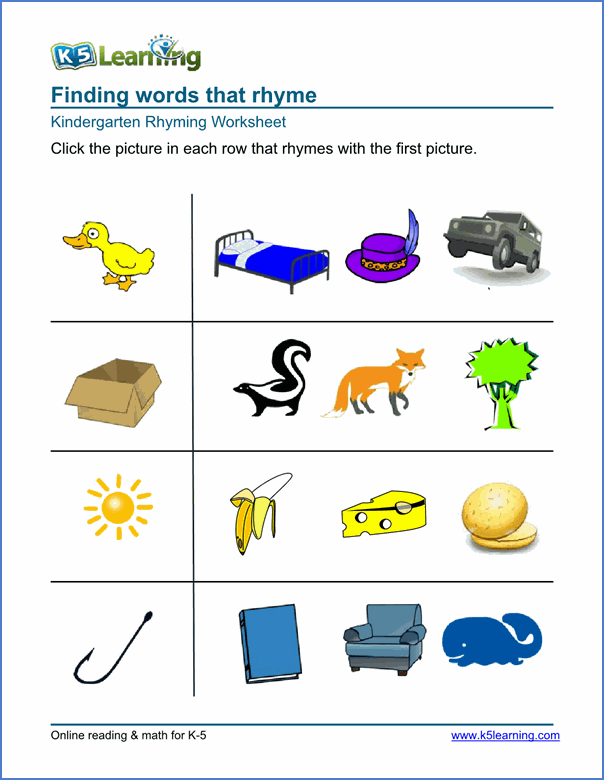
Author
Teaching Rhyming Words — My Teaching Cupboard
All early childhood teachers need to be competent at teaching rhyming words. Rhyme is an important concept in preschool and kindergarten because the ability to recognise, combine and manipulate the sounds in words are important pre-reading and pre-writing skills. These skills should be taught in every early years literacy program.
If you are wondering why you need to be teaching rhyme or how to effectively teach the skill of rhyming to your students, this blog post is for you.
Rhyming words are words that have the same ending sound. The emphasis is on the sound and not the spelling. That’s why identifying and producing rhyming words are phonological awareness skills.
Why Learn Rhyming Words?
From preschool and kindergarten right through to grade one and two, lessons on rhyming words are beneficial and necessary in developing early reading and writing skills.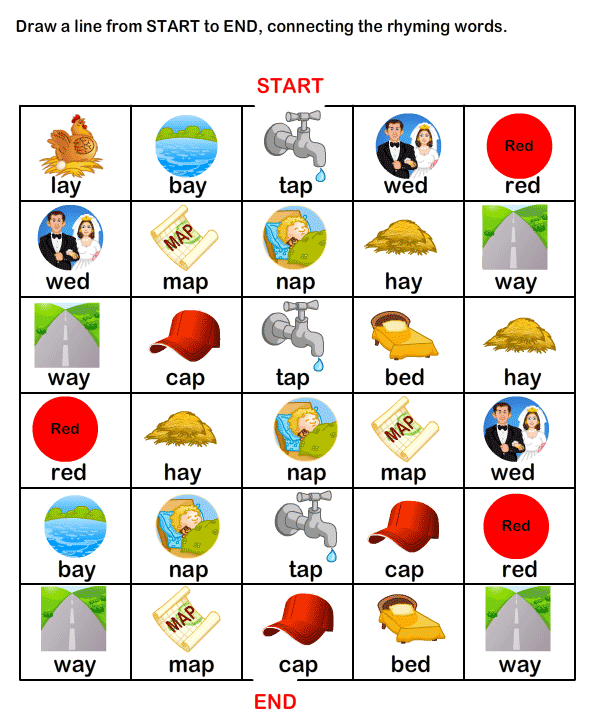
Research indicates a direct correlation between learning rhyming and eventual reading readiness. There are many benefits of teaching rhyming words:
rhyming helps children improve their oral language skills
it lays the groundwork for spelling and written language
rhyming develops predicting skills – a reading comprehension strategy
it is fun!! Nonsense words increase student engagement because as you know, a bit of fun ensures children are so much more invested in their learning.
Recognising rhyming words and generating rhymes are important phonological awareness skills.
What is phonological awareness and why is it so important?
Phonological awareness is an awareness of the ways in which words and syllables can be broken up into smaller units. There are three levels of phonological awareness: syllable awareness, intra-syllable awareness, and phonemic awareness.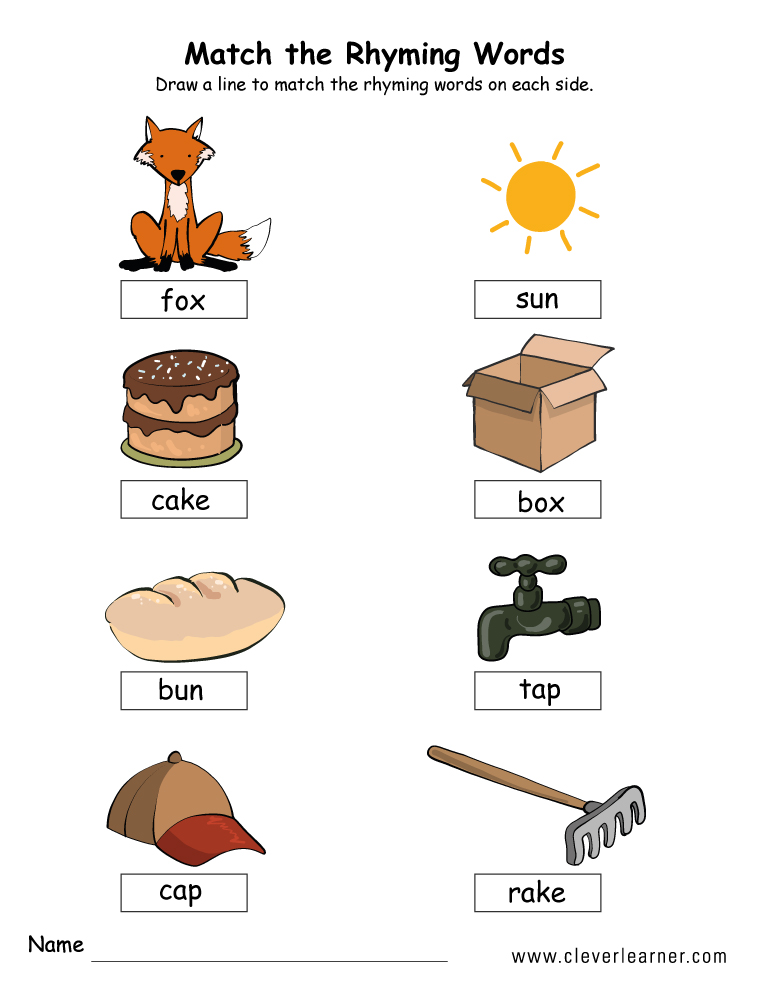
You can read much more about teaching phonological awareness and the three levels HERE on this blog post. Teaching Phonological Awareness, Syllables and Phonemic Awareness
The ability to recognise, combine and manipulate the sounds in words is an important part of an effective early childhood literacy program.
Phonological awareness does not seem to develop in a particular developmental sequence, but some elements do appear to be more difficult than others to master. Young learners seem to be able to split words into onsets and rimes much more easily than manipulating the individual phonemes (sounds) within words.
There are even levels of difficulty within the phonological skill of rhyming.
Identifying rhyme – does hat rhyme with cat
Matching rhyming words – which one rhymes with hat, pig, or cat
Oddity – which one doesn’t rhyme, hat pig cat
Producing rhyme – give me a word that rhymes with hat
How to Teach Rhyming Words
It is not necessary to devote large amounts of time in your literacy block to explicitly teaching rhyming words.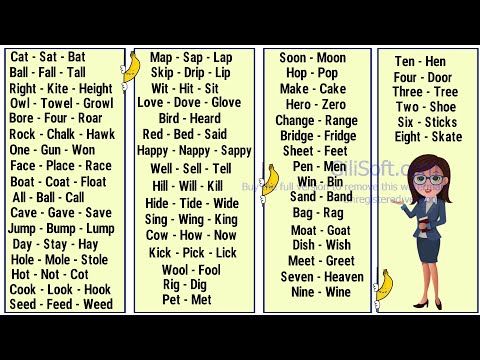 Ten minutes each day is all you need to have your students developing an awareness of rhyming words in no time.
Ten minutes each day is all you need to have your students developing an awareness of rhyming words in no time.
Quick and Easy Strategies for Teaching Rhyming Words
Display and discuss word family anchor charts. You can co-create some word family posters with your students. Brainstorm some rhyming word family words and encourage the children to illustrate them. They could be illustrated with their hand-drawn artwork or with pictures cut from magazines. If you would like some word family posters already done for you, you can download a set of 55 word family charts HERE in my store. Make sure to revise the charts daily bringing attention to the fact that rhyming words sound the same at the end.
55 Rhyming Word Family Posters
$4.50
Add To Cart
Ensure you are reading aloud a wide range of books featuring rhyme. You can find a list of 79 of our favourite rhyming books for kindergarten and preschool HERE.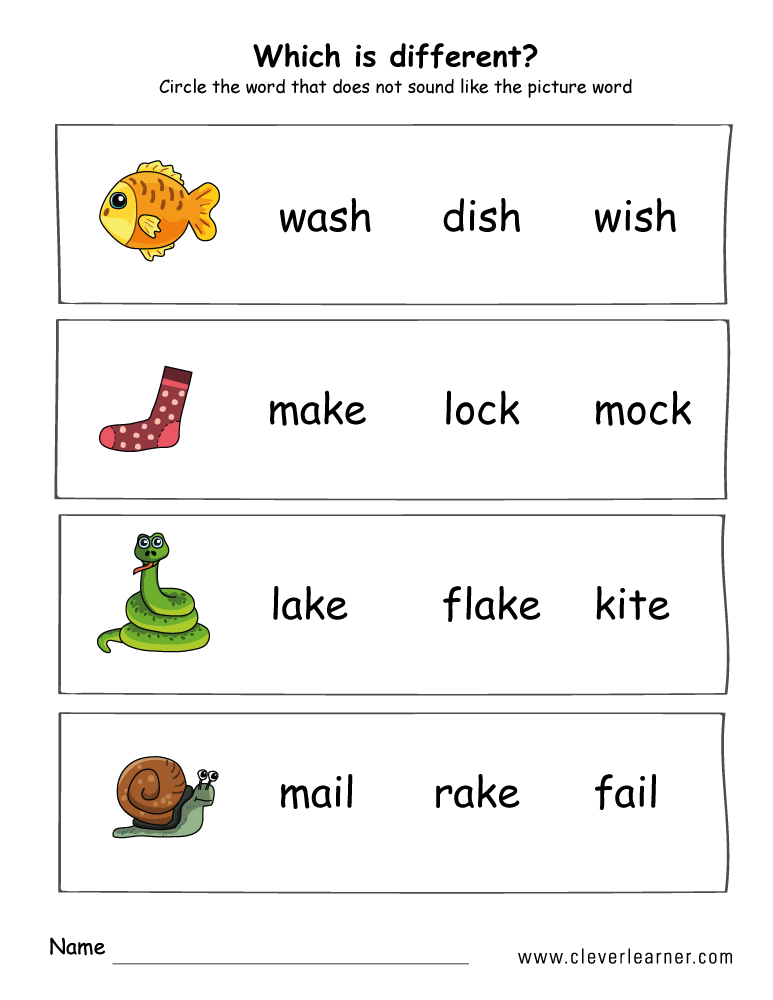 There is an enormous amount of research around the benefits of regularly reading to children so try to include rhyming books in your daily read-a-louds. Rhyming books with rhythm and repetition will expose your children to rhyming in a meaningful and engaging way.
There is an enormous amount of research around the benefits of regularly reading to children so try to include rhyming books in your daily read-a-louds. Rhyming books with rhythm and repetition will expose your children to rhyming in a meaningful and engaging way.
Strategies to teach rhyming words with picture books
o Discuss the rhymes.
o Pause before a rhyming word for the children to predict.
o Point out the rhyming words by saying, “I hear rhyming words! ‘Dog’ and ‘fog’ rhyme.”
o Brainstorm with the children more words that rhyme with words in the book.
o Have the children put their thumbs up each time they hear rhyming words.
Songs and Finger Plays provide a rich multi-sensory approach to learning rhyming words. Rhyming songs and finger plays will stimulate your children’s senses of seeing, hearing, and touching. They usually have the added bonus of movement too.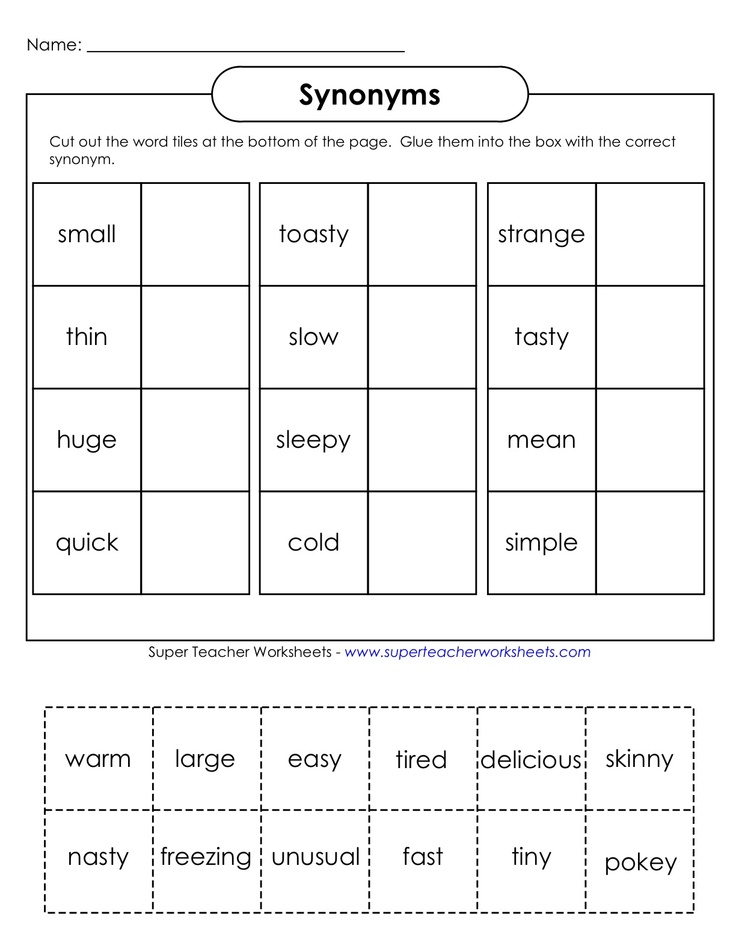
All teachers know the benefits of incorporating movement into their lesson plans! Gross motor and fine motor skills, coordination and body awareness can all be developed through movement songs and finger plays.
If that’s not enough – these rhyming gems also build vocabulary and develop speech skills. Your children will learn about the sounds of spoken words and hear the rhythm in language whenever you include rhyming songs and finger plays in your school day.
Nursery rhymes and short poems will provide another beneficial learning opportunity in your early literacy program. Perfect for learning about rhyming words and the rhythm and patterns of language, nursery rhymes and short memorable poems should be a staple in every early childhood setting.
Strategies to teach rhyming words with nursery rhymes
o make them into class reading books and add them to your classroom library.
o create innovations together (Humpty Dumpty sat on a rock Humpty Dumpty got a big shock)
o add them to learning provocations for creative and open-ended play
A Rhyming game with children’s names is so much fun.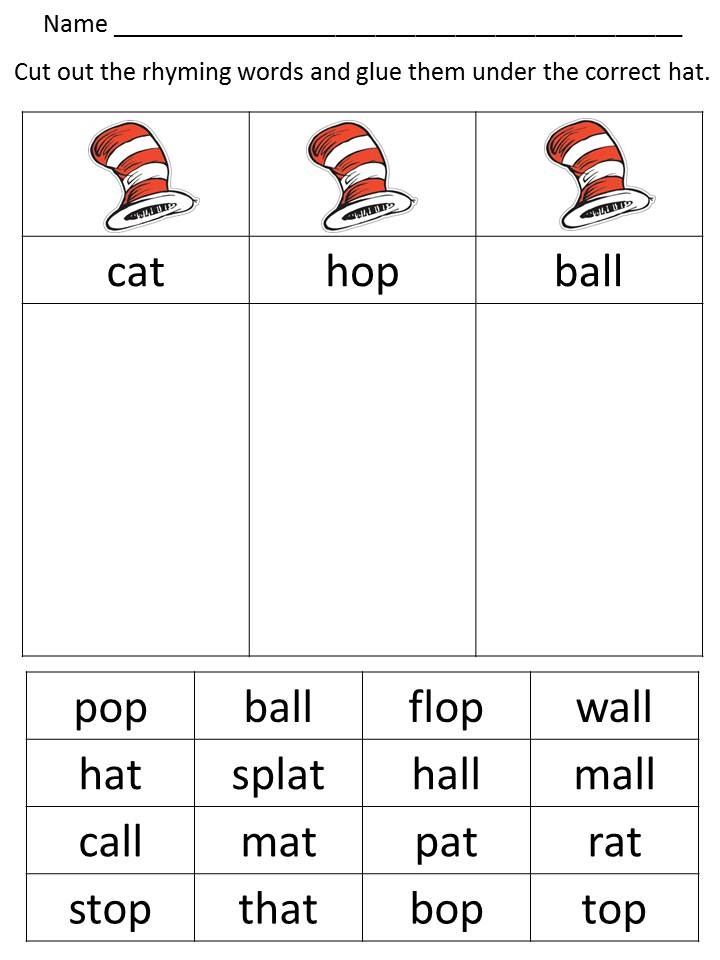 Creating word plays with your children’s names will make for memorable and meaningful rhyming activity. Here’s one game your students will love: Teacher says – it starts with /b/ and ends with “en”… put them together and it says … (children say ben)
Creating word plays with your children’s names will make for memorable and meaningful rhyming activity. Here’s one game your students will love: Teacher says – it starts with /b/ and ends with “en”… put them together and it says … (children say ben)
If your students are really struggling with this important phonological awareness skill and you need to devote some serious learning time to teaching rhyming words, you might like some more intensive activities. You will find 43 tried and tested hands-on rhyming activities to implement in your classroom here in this blog post. 43 Rhyming Word Activities
Teaching Rhyming Words through Play Based Learning
If you are implementing a play-based pedagogy, you might be interested in these 43 educational hands-on rhyming games and activities to teach and revise word families and rhyming words. They are perfect for investigation areas or literacy learning centers.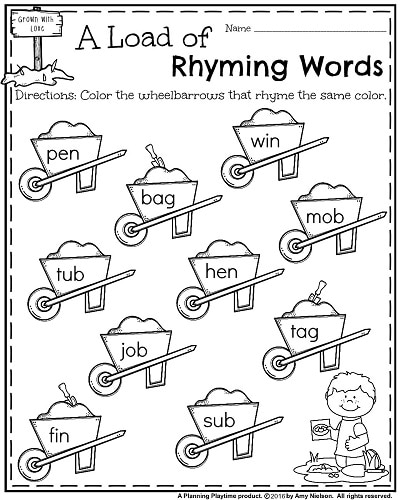
Your children will read and write rhyming words, revise word families, see that rhyming words have the same ending and listen for the rhyme in words. There are sensory tray ideas, provocation posters, ideas for your math, literacy, atelier, play dough play spaces and so much more in this comprehensive early years literacy provocations pack.
Rhyming Investigations Pack
$6.00
Add To Cart
Each provocation includes handy tips and ideas for setting up engaging investigation areas along with detailed photographs to ensure your Word Family and Rhyming learning areas and activities are quick and easy to prep and set up.
If you liked this post on teaching rhyming words, please consider sharing it.
Just CLICK the sharing box below.👇
Explicit TeachingJanelle McArdlerhyme, rhyming words, word families, literacy, kindergarten, preschool, grade 1, hands-on learning, teachingComment
Game rhymes
Sergeeva T.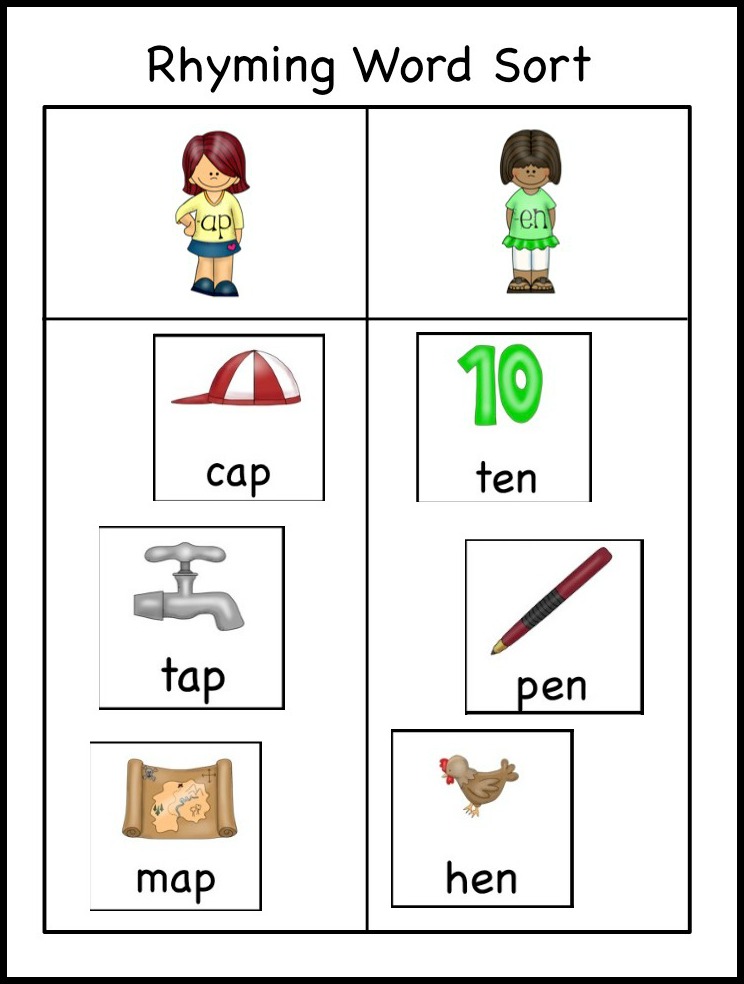 V.
V.
Chain rhyme
GOALS
- Teach children to answer with a word consonant with the one named.
- Learn to feel the rhythm, rhyme.
Teacher
Guys, let's play soon.
We will choose different words!
Say any words, okay?
But only such that it turns out ...
(smoothly).
What words similar in sound can be found for the word bird?
Children. Titmouse, small, singer.
Teacher. Speaking of bunny?
Children. Know-it-all, dunno, runaway, jumper, runaway.
Teacher. Speaking of cat?
Children. Spoon, bowl, basket, accordion, midge, potato, window, leg, earring, matryoshka.
Teacher. Speaking of mouse?
Children. A bump, a puff, a puff.
Teacher. Speaking of cancer?
Children. Poppy, tank, varnish, like.
Variant
The teacher throws the ball and pronounces a word, the one who catches the ball answers with a word consonant with the name.
Stove - sheep, river.
Birdie - titmouse.
Magpie - white-sided.
Bunny - runaway.
Find a pair
GOALS
- To teach children to match words that are similar and different in sound-rhythmic structure.
- Develop visual memory.
Teacher. Connect the words of the two columns so that you get a rhyme.
Edge Grass
Firewood Scallop
Herringbone Hut
Cockerel Needle
White-sided Fox
Bunny Cornflower
Magpie Sister
Titmouse Flower
Cowardly Bird
Variant
Picture words can be suggested. Children find a picture that is similar in sound-rhythmic structure.
Game with pictures
OBJECTIVES
- Teach children to choose a rhyme for the word - the name of the picture.
- Develop language flair.
First you need to prepare cards with pictures from which you can make rhyming words, for example, a picture of a pipe, another picture of a sponge. All pictures are located on a large table or on a carpet on the floor. Children distribute them in rhymes. For example, near the picture of a river there is a picture of a stove, a donkey is a goat, a cat is a spoon, a watering can is a snake, etc.
Children distribute them in rhymes. For example, near the picture of a river there is a picture of a stove, a donkey is a goat, a cat is a spoon, a watering can is a snake, etc.
Options
1. One child takes a picture, the other finds a picture with a rhyming word. Both say their words out loud. The group repeats.
2. Place pictures face down. Open one picture and say the corresponding word out loud. Whoever can name the rhyming word gets a picture and can open the next one.
3. One picture is opened. All children draw an object called a rhyming word. Here the solution is represented by a figure.
Say a word
OBJECTIVES
- Teach children to write their own rhyming lines.
Teacher. You already know how to pick up rhyming words. Today we will try to make suggestions.
Where were you, squirrel, walking?
Children
I collected nuts.
Teacher
The squirrel jumped fast,
Children
Lost all the nuts.
Teacher
Whom did you find, hedgehog?
Children
I brought a squirrel to you.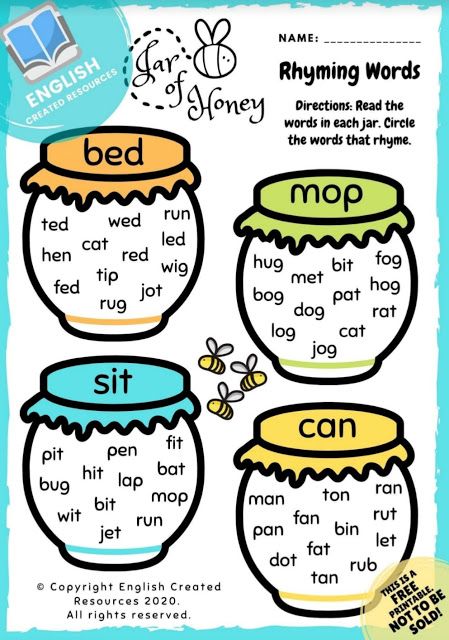
Teacher
Yesterday we played in the forest,
Children
We saw a huge mushroom.
Teacher
A fungus stood aside,
Children
The hedgehog couldn't find it.
Teacher
Like a little hedgehog
Children
Shoes have become torn.
Teacher
And our squirrel
Children
Clean plates.
We are poets
OBJECTIVES
- To teach children to compose quatrains that contain a whole story.
Teacher
The teacher says to Paraska:
“What fairy tales have you read?”
Paraska thinks, "Oh,
I haven't read any!"
And behind someone whispers:
"Turnip!"
Paraska yelled: "Cap!"
Today we will also come up with funny poems. What or who do you want to write about?
Children answer.
Let's talk about the cat, let's support Serezha. I will write down what you tell me, and then I will read out what we have done.
Children come up with unexpected situations with a cat by rhyming words.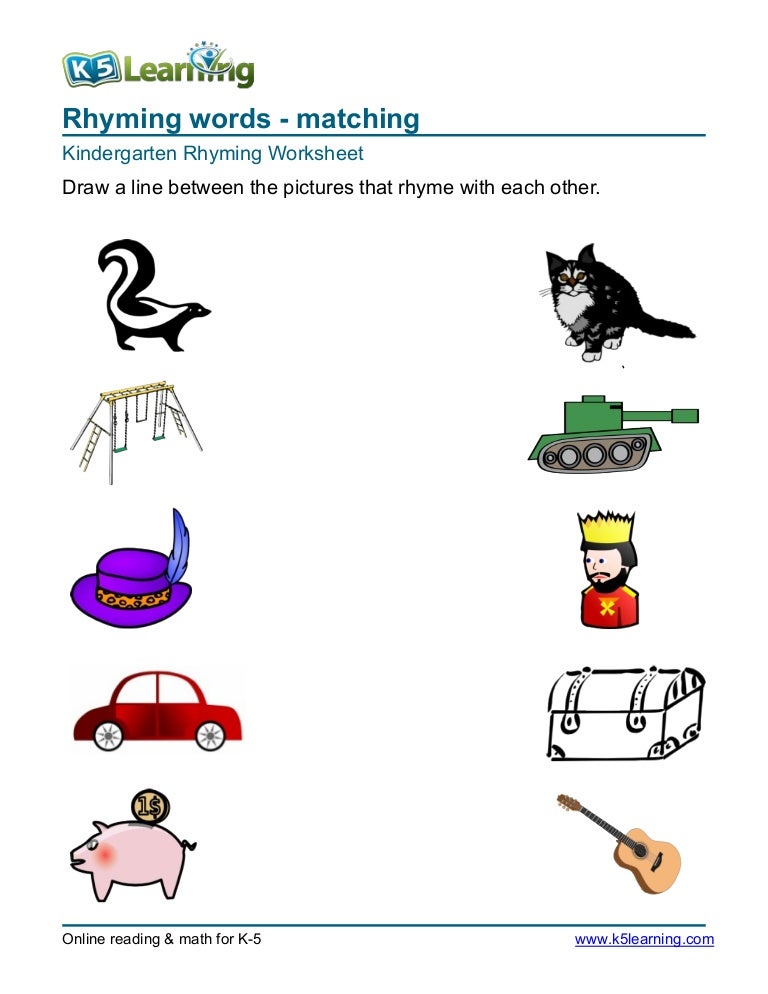
Children. The cat sat on the window. The cat saw a midge. The cat took a basket and went for potatoes. The cat sat on the window and dangled its legs. The cat put all the spoons in a basket.
Council. The most important thing is not to leave the words of children without attention. And for each word come up with a rhyme.
Stories to rhyme
OBJECTIVES
• Teach children to write simple rhymes.
• Learn to distinguish between the sound and semantic sides of speech.
Teacher. Do you already know what rhyme is in poetry?
For example, the rhyme for the word flower can be a leaf, and for the word porridge - curdled milk. Bear cub Misha wants to teach you how to do it. They drew funny pictures with Druzhok and came up with inscriptions in verse for them. And the last word in the second line of each rhyme was not completed. Find the right rhyme yourself. It's not difficult at all.
A friend is behind the fence and looks timidly,
How cleverly a friend is wielding .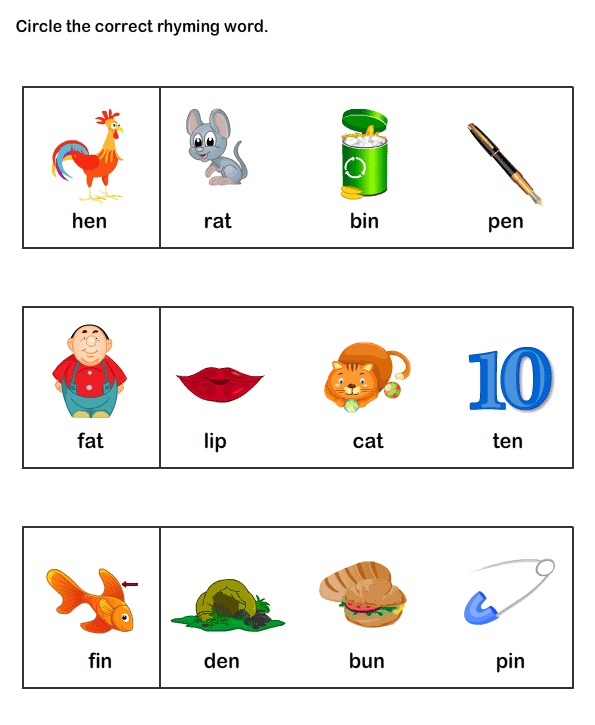 .. (with chalk).
.. (with chalk).
Druzhka is disturbed by one thought
Will they see ... (elephant).
When Mishka gets tired of playing
Let him stand at the gate ...
(mouse).
All morning they searched and searched until
Found a new bowl...
(Druzhka).
Help Dunno compose poetry
OBJECTIVES
• To teach children to distinguish between sound and semantic aspects of speech.
The teacher brings N. Nosov's book "Adventure Dunno".
Teacher. Guys, did you recognize this book? Today I will tell you how Dunno wrote poetry.
... After Dunno did not turn into an artist, he decided to become a poet and compose poetry ... Dunno came to the poet Tsvetik and said:
- Listen, Tsvetik, teach me to compose poetry. I also want to be a poet.
- Do you know what a rhyme is?
- Rhyme? No, I do not know.
- Rhyme is when two words end in the same way, - explained Tsvetik. - For example: a duck is a joke, a shortbread is a walrus. Understood?
- Understood.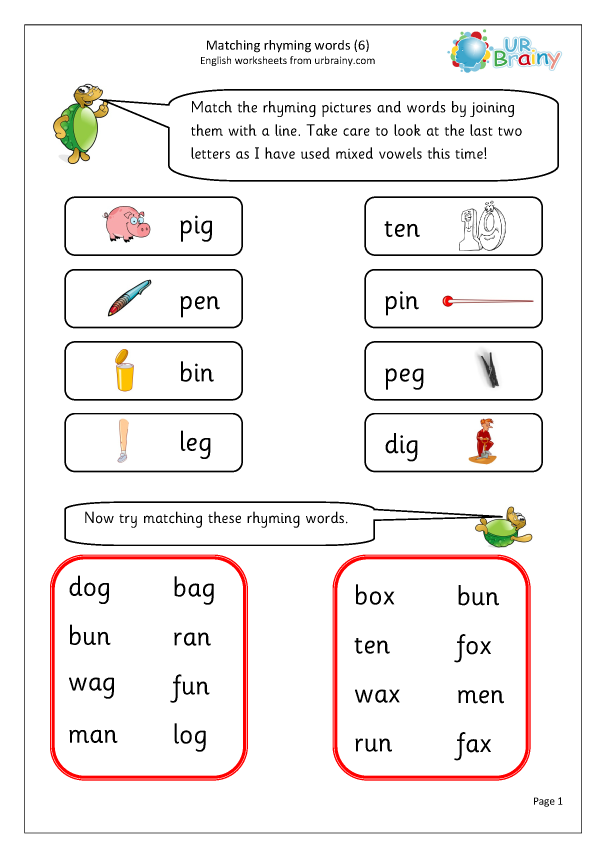
- Well, say a rhyme for the word "stick".
- Herring, - Dunno answered.
Guys, help Dunno.
Game in progress.
All day long Dunno wrote poetry and finally came up with:
Znayka went for a walk to the river,
Jumped over the sheep.
Hurry was hungry -
Swallowed a cold iron.
Under Avoska's pillow
There is a sweet cheesecake.
Find rhymes
OBJECTIVES
- Teach children to identify rhyming words from a text by comparing them.
Teacher. Today I will read B. Shergin's story "Rhymes" to you, and your task is to hear rhyming words. Do you agree?
Shish went to the city on his business. It was summer, it was hot.
An uncle rides a horse ahead. Shish and asked him to give a lift. He sat down next to his uncle. But Shish cannot sit silently. He is only silent when he sleeps. He says:
- Uncle, let's play rhymes.
- What is it - rhymes?
- And let's say it so that it was smooth.
- Come on.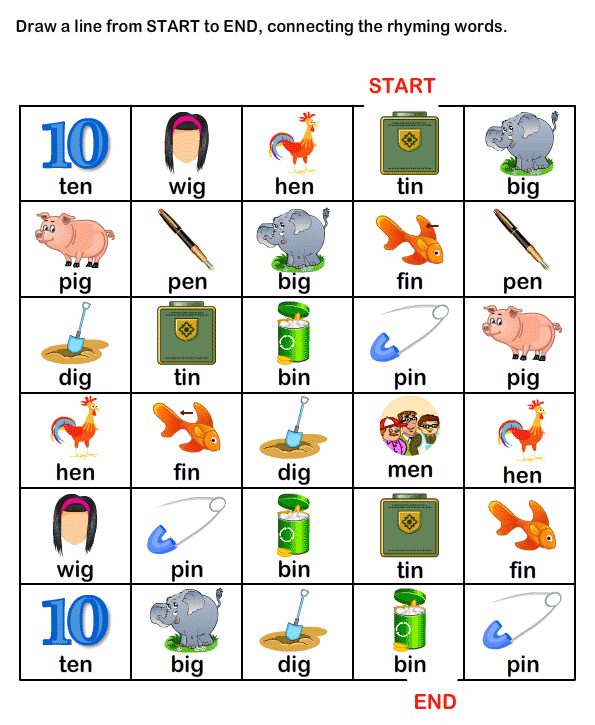
- Here, uncle, what was your father's name?
- My dad's name was Kuzma.
Shish says:
I'll take your Kuzma
by the beard!
- Why are you going to take my dad by the beard?
Shish says:
- This, uncle, is for rhyme. Tell me what your grandfather's name was.
- My grandfather's name was Ivan.
Shish says:
Your grandfather Ivan
Put the cat in his pocket.
The cat is crying and sobbing,
Your grandfather is scolding.
The uncle got excited:
- Why would my grandfather put a cat in his pocket? Why are you picking up such rubbish?
- This is an uncle, for rhyme.
- I'll tell you a rhyme, what's your name?
- My name is… Fedya.
Uncle says:
If you are Fedya,
Then catch a bear in the forest.
Ride a bear,
Get off my horse!
- Uncle, I was joking. My name is not Fedya, but Stepan.
Uncle says:
If you are Stepan,
Get on the eroplane,
On the eroplane and fly,
Get off my horse!
- Uncle, I was joking.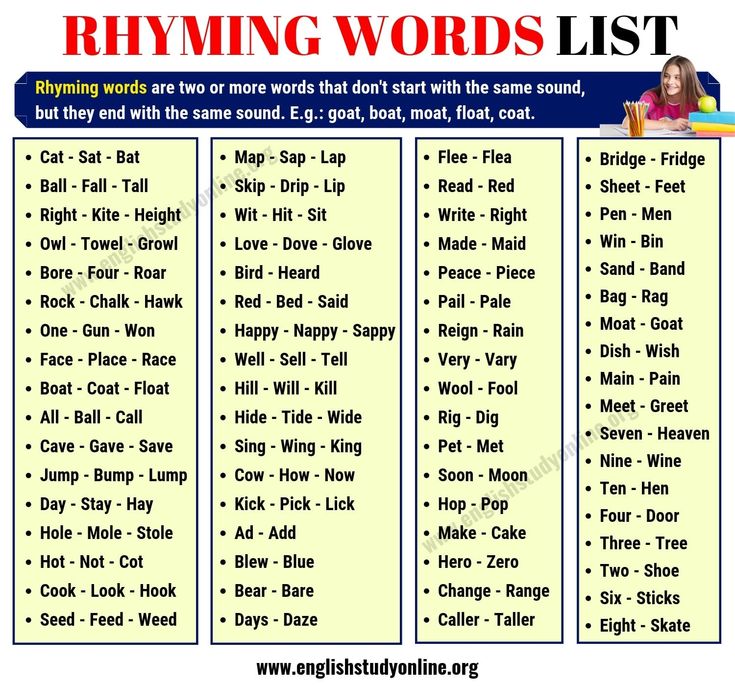 My name is not Stepan, but… Silantiy.
My name is not Stepan, but… Silantiy.
Uncle says:
If you're Silantius,
Then get off my horse.
- What are you, uncle, there is no such word - “tears”.
- Although not, get off anyway!
Shisha had to get off the cart. It serves him right. If a kind person carries you on a horse, you sit silently, and do not invent all sorts of trifles.
Children find rhyming words in the text and name them.
Not just a bunch of words: how rap works
In 2019, rap became the main music in Russia. Rappers collect stadiums, become glossy heroes, participate in Blue Light on Channel One, speak at rallies and annoy almost everyone. Bookmate Journal tried to figure out how this genre works and what millions of people find in it.
Topic
Whether the rapper is talking about his life, writing a story from the perspective of a fictional character, or talking about a social issue, the variety of topics covered in rap tends to infinity. There are many different pieces of glass inside the rap kaleidoscope: these are noir action films from the 90s of the Krovostok group, Scryptonite's autobiographical stories about childhood in Kazakhstan, Noize MC's sharply social statements, and ironic and humorous stories from Bird Em.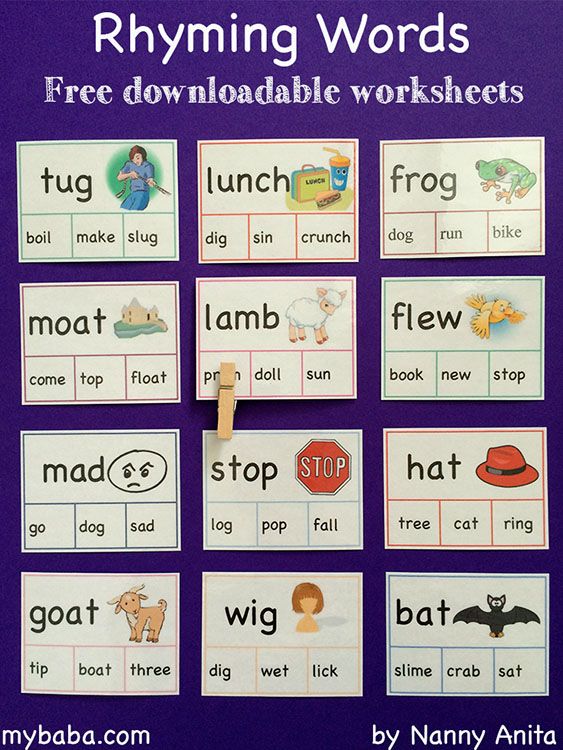
Flow
Flow (eng. flow, "flow") - presentation, the very manner of performing rap, the style of reading. This is an alloy of the intonational component (voice, semantic stresses, pauses) and the musical component (rhythm, tempo).
The flow of each rapper is unique, and it can also change from track to track: the more diverse and multifaceted the flow, the more interesting it is to listen to the artist. Compare the GONE.Fludd flow in Mumble and Boys Don't Cry. In the first case, it is swift and even aggressive, in the second, it is more melodic and relaxed.
Some rappers make their flow mathematically precise, thought out to the smallest detail. To achieve this, flow charts are drawn up, in which they mark where to take a break, slow down or, conversely, speed up.
It is important to understand that the quality of the flow does not depend on the speed of reading, but if the artist can read quickly without compromising the perception of the text, this can become an additional means of expression.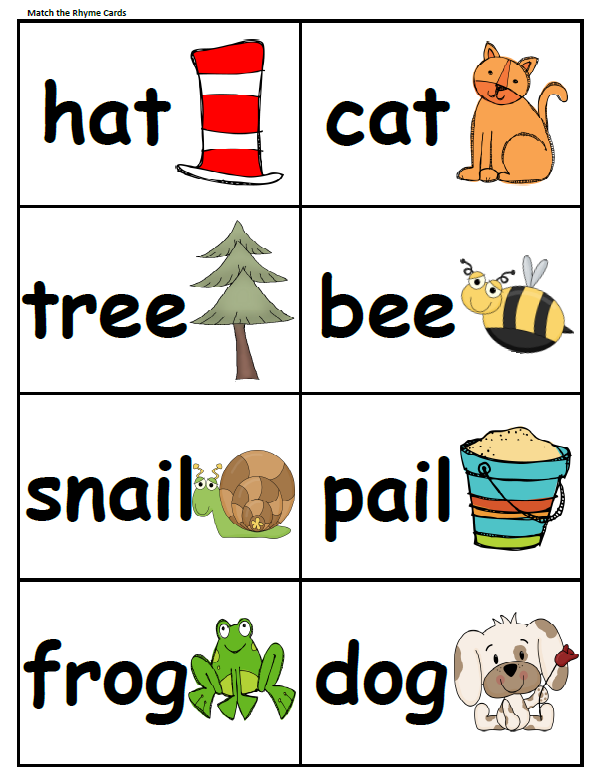
Increasing the speed of reading FACE in the middle of the first verse becomes an important semantic accent:
Rhymes
Rhymes are the backbone of rap text. It is thanks to them that the lines intertwine with each other, forming a coherent and rhythmically organized array of verbal labyrinths. Rhymes also give the text musicality - due to repeated and combined sounds. It is considered bad form to rhyme with verbs: firstly, it is cheating (substitute the correct verb - that's all that matters), and secondly, the text becomes pale and less expressive. The diversity and complexity of rhymes enrich the lyrics and make it multifaceted.
In addition to the verbal rhymes already mentioned, there are also:
Square rhymes (rhyming words have the same endings) Oh those kids Boulevard Depo "Oh those kids" Accent rhymes (rhyming words have consonant syllables) How to combine incompatible things , Uncle Zhenya "Solaris" Internal rhymes (not one word rhymes in a line, but several - in the middle of the line and at the end) I am black as pitch, the nine is black as mass black cumin oil "Office of the President 2" Double and triple rhymes (two or even three words rhyme in each line) Scum in places, everything on sheets on shelves OBLADAET feat. Full-line rhymes (almost all words in lines in each line rhyme) Years like an Odyssey through suburbs Oxxxymiron “London against everyone. Part 2" Only nouns rhyme in the track "Illusion of Freedom" by Dendy: The basis of music in rap is the beat - the rhythm of the song. The question “what comes first: bits or text” is like the chicken and egg problem. Someone starts from the fact that rap is primarily music, and writes lines over the finished beat. In this case, the beat can guide the creative thought of the artist and influence the text that has yet to be composed. But if you pay attention to the text first, the track will turn out to be no less solid. For example, rapper Guerilla Black believes that "the purest flow comes when you don't write to the beat - you just hear everything that's going on in your head and take the first solid thought from there." Some artists write their own beats, others buy ready-made beats or even rent them (in this case, there are restrictions on beat reproduction). Sometimes a successful beat makes a track with the most ordinary lyrics a hit, and its artist a star. The 19-year-old rapper Big Baby Tape has been writing beats for other artists for a long time, but later became an artist himself: his track Gimme the Loot in November 2018 took first place in terms of the number of hits on the international Genius platform, overtaking the hits of Lady Gaga and Ariana Grande. Not the last role in its success was played by the original beat with a sample from the track Gimme the Loot by the American rapper The Notorious B. Hardly anyone will come to an artist's concert without first listening to his tracks. Of course, poor recording quality can ruin a song that is brilliant in all respects. But in order to record something cool, it is not necessary to spend money on an expensive studio - many famous artists at the beginning of their journey made do with home equipment and their own sound engineer skills. It is equally important to rehearse the reading before recording, to think in advance at what moments it will be appropriate to take a breath. Some rappers record only two or three lines and then glue them together to avoid mistakes or add additional vocal effects. Usually performers try to mask cuts, but if the quality of the mix was not perfect, attentive listeners may notice them.
Oversized, mesh
Chain-link, tablets
Ed Hardy cap
Such as humanity and love for humanity ?
Be honest, but avoid mental injury ,
Stay alive and escape from the terrifying eternity ?
The muzzle of a black barrel, like the walls of my entrances
Webs, domes, like children in search of batches
You are the same as me - you are dependent, you are behind the weight
You know this, so put in columns
There is a black box, like Pakistan in box 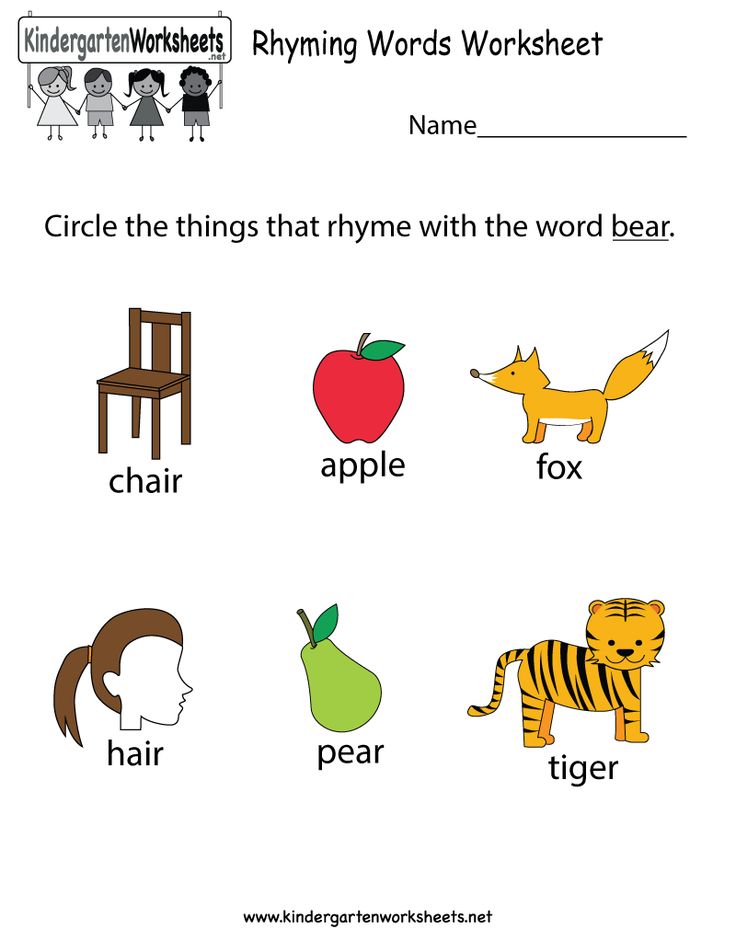 I1 KOSMONAVT
I1 KOSMONAVT
City of London vs. all part two, man Beats
 Some performers are sure that the finished beat only distracts and prevents them from concentrating on the lyrics.
Some performers are sure that the finished beat only distracts and prevents them from concentrating on the lyrics.
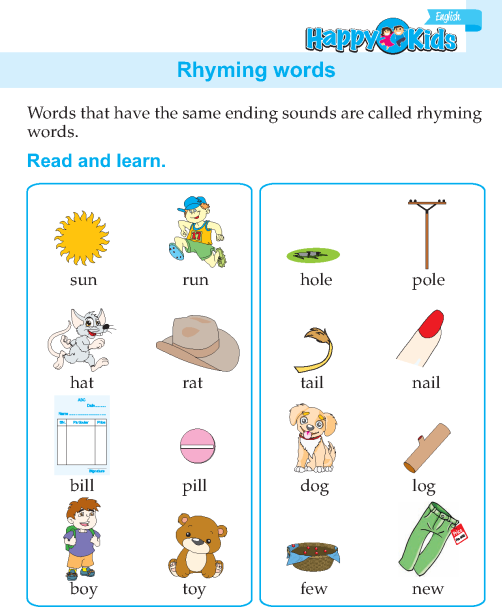 I.G.
I.G. Recording and additional techniques
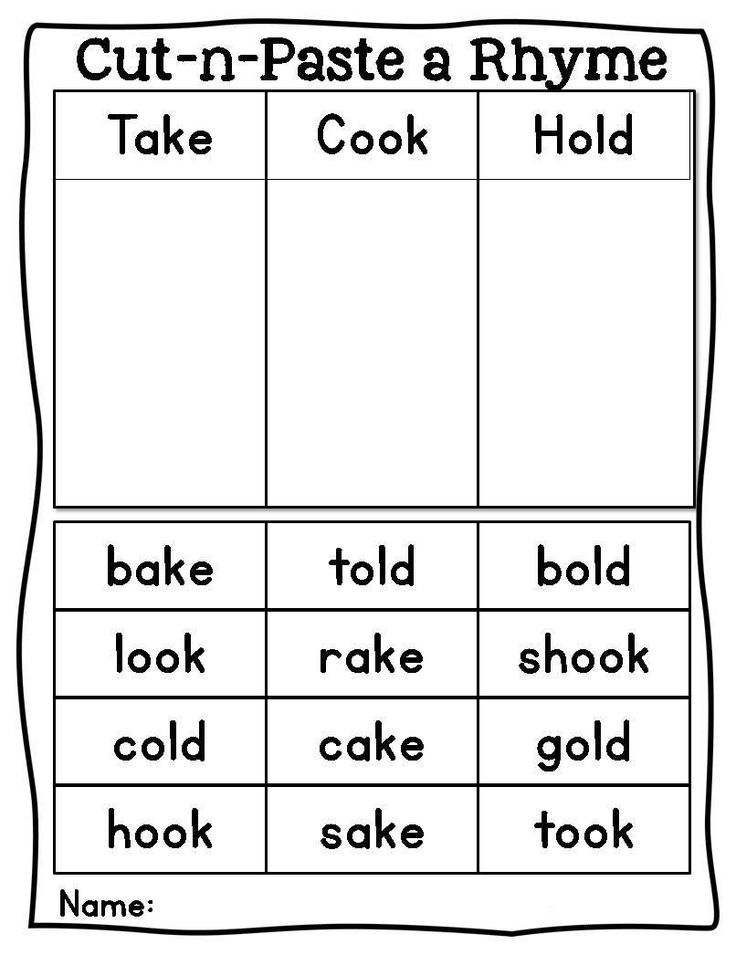
Learn more

